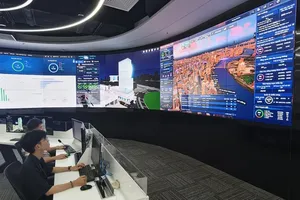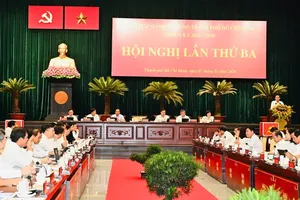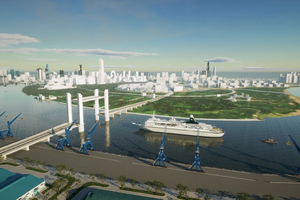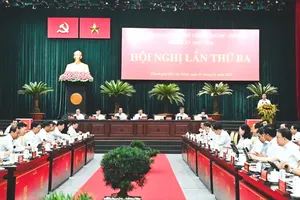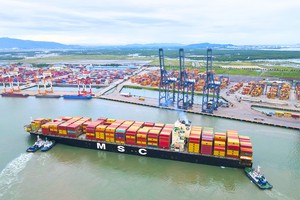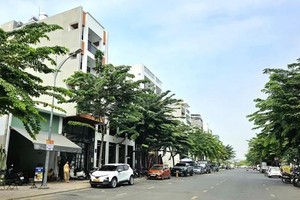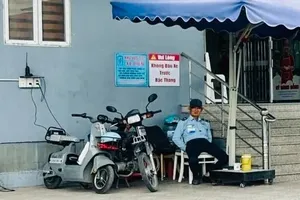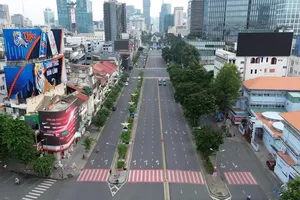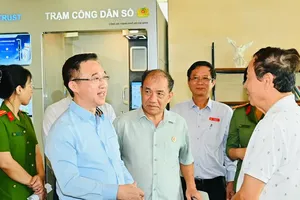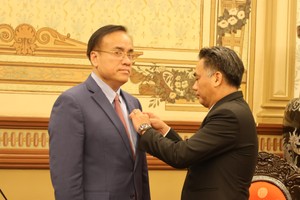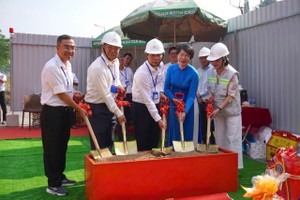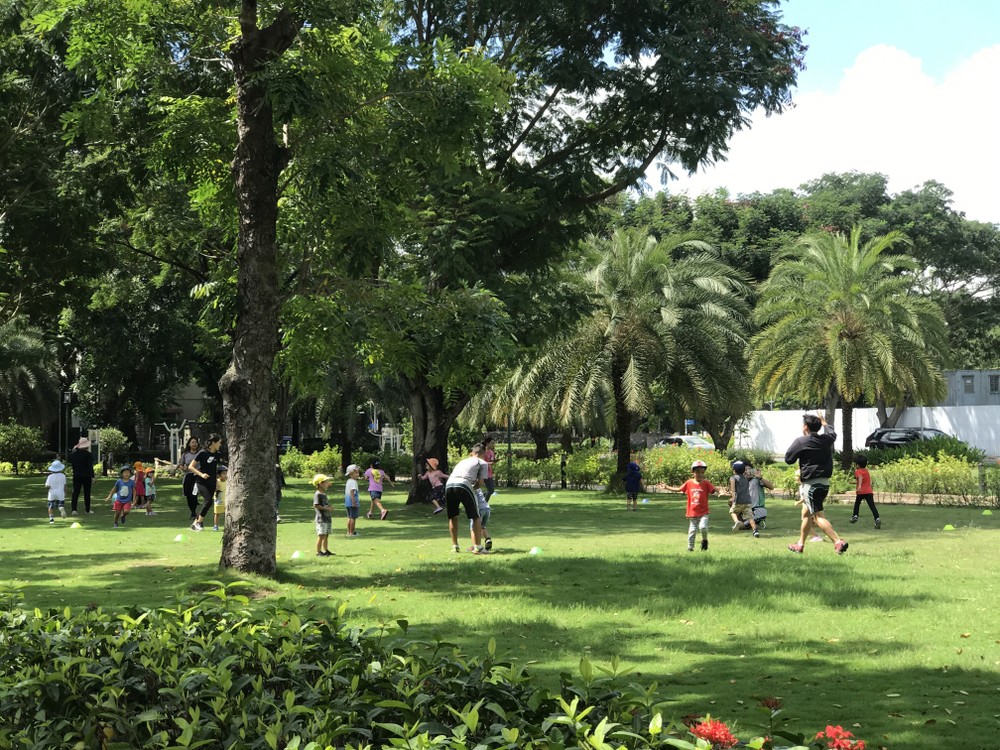
HCMC is thirsty for parks and trees
A heat wave has been gripping all localities across the country; therefore, urban green spaces may be an important resource to strengthen the resilience of city dwellers. Some practical experiments show that, in large park areas, or tree-lined roads, the temperature is much lower than in avenues without trees on either side.
However, many localities have witnessed a lack of parks and green areas and it is not easy to carry out recreational park projects.
According to statistics, Ho Chi Minh City is the urban area with the lowest green area per capita in the country with currently only about 0.55 square meters per person while it is 2.06 square meters per person in Hanoi and 2.4 square meters per person in Da Nang City in the Central region.
Director of the city's Department of Planning and Architecture Nguyen Thanh Nha informed that in planning projects, Ho Chi Minh City has planned a park area sufficient to meet people's needs.
However, many projects are still on paper due to lack of funding, making people in the planning area miserable. Specifically, as residents on Cay Bang Street in Hamlet 2 of Binh Chanh District’s Tan Kien Commune complained this area was planned to be a green park for years but it has not been implemented. They are therefore not allowed to build their houses which are in poor repair. Worse, many household owners rent their houses as waste warehouses and tenants burn scraps, leading to pollution and the risk of fire and explosion.
Meanwhile, a number of big park projects are also in the middle of construction; for instance, the Go Vap Cultural Park project is a typical example. The project has been implemented since 2002, with a scale of more than 37 hectares on the banks of the Vam Thuat River. It is designed as one of the large entertainment centers that can receive 10,000 visitors per day or more than 3 million visitors per year. After more than 20 years, due to many reasons, including errors during the construction process, the project has only completed a few items to date.
Cooperation to bring benefit to businesses, the state and dwellers
A leader of the Department of Planning and Economics of Ho Chi Minh City said that currently, the city is adjusting the general planning, so the planning industry also accepts people's feedback to rebalance park and green area projects accordingly.
While public investment capital has not been able to allocate enough capital for projects, inviting private investment to develop green parks has not been implemented because according to the provisions of the Law on Investment under the public-private partnership method, investment in the construction of recreational parks isn’t included in this method.
According to the Department of Construction of Ho Chi Minh City, parks are land managed by the State, so they must comply with regulations on the management and exploitation of public assets. Director Pham Viet Thuan of Ho Chi Minh City Institute of Natural Resources and Environmental Economics said that the governments should promote social contributions to existing abandoned, or unused recreational parks.
Specifically, Ho Chi Minh City invites private companies to participate in the construction and renovation of abandoned recreational parks. In return, businesses can use 5 percent of the land fund to build auxiliary works, in accordance with the provisions of the Planning Law. However, this form can only be met when creating a multi-functional park. As for simple parks and street trees, they must be identified as public services, and the state budget will allocate enough for their maintenance. However, public utility units should be allowed to provide services to have more revenue to reinvest in growing more trees and green areas in parks.
The city needs to create all conditions to mobilize financial contributions and other capital sources from private companies to invest in the park. In the process, investors will be permitted to exploit multi-purpose areas to compensate for investment capital, said Mr. Pham Viet Thuan.
Some expert voiced their agreement with the mechanism to attract private investment for the development of parks and green areas. Especially, they emphasized the mechanism to force investors to rationally use land but to meet the set requirements. Some preferential policies are proposed for businesses. In addition to setting aside land for parks, it is necessary to arrange additional land funds for commerce and services. In some projects, it is even possible to consider arranging additional housing areas so that investors can recover capital as well as have funds to maintain park operations.
Regarding this issue, the Department of Planning and Architecture said that in recent times, many private units expressed to participate in projects of construction for recreational parks by contacting the Department for guidance on implementation. However, the set of standards currently applied nationwide is somewhat outdated and has many points that are not suitable for the specific situation of Ho Chi Minh City. Therefore, Ho Chi Minh City is developing a new set of standards to apply.
As per planning, Ho Chi Minh City has 11,369 hectares of parkland, but only 405 parks with an area of 508 hectares have been put into operation so far. The public parks and greenery development program for the 2020-2030 period has set a target that an additional 150 hectares of public recreational parks will be built from 2020 to 2025 and an additional 450 hectares of public green parkland between 2026 and 2030. The city aims for the target of 1 square meter of green park per person. To achieve this goal, the Ho Chi Minh City Department of Construction has just proposed investing in six more parks in the area of nearly 800 ha. These projects are all very large in scale. They include the 485 ha Saigon Safari Park in Cu Chi, the 128 ha ecological forest area of Thu Thiem New Urban Area, the 20 ha Thu Thiem Square Park, the 13 ha Go Cat Park in Binh Tan District, the 150 ha Thanh Xuan Green Park in District 12, the 3.8 ha Green Tree Park in Ward 12 of Binh Thanh District. However, without a suitable investment attraction mechanism, no one can forecast when these large-scale projects will be built.
